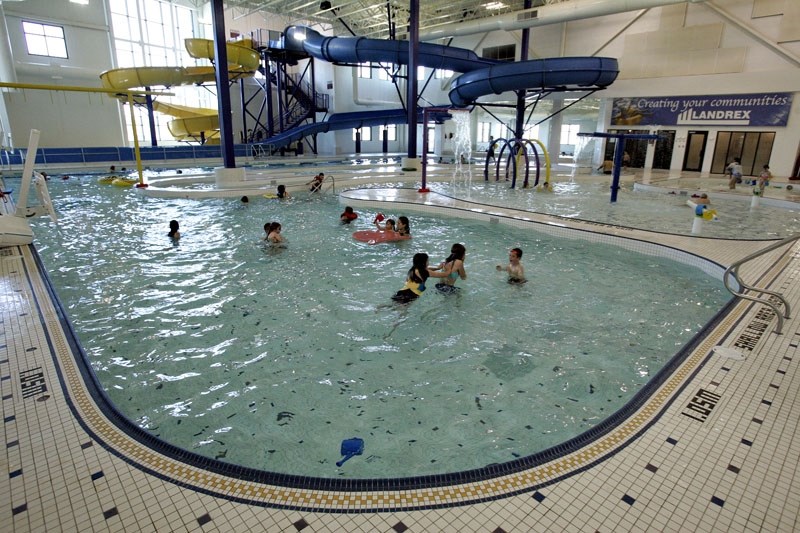The expansion plans for Servus Credit Union Place ran into trouble Monday night as city council approved the concept but not how any new facilities would be funded.
Council gave a unanimous green light to the conceptual plan for an expanded Servus Place but when a motion came forward to add the first phase of construction to St. Albert’s capital plan, a majority of council voted it down.
“At this time I am not ready to see this show up in the capital budget,” said Mayor Nolan Crouse. “If we need to do this, let’s do it right.”
The amended plan put forward by Servus and city staff would see three phases of construction to add more space and amenities to the recreation centre that would cost, in total, approximately $25 million to $29 million in 2013 dollars.
Administration had suggested phase one be added to the capital plan for 2015 budget discussions.
The expansion plan as tabled Monday looks different than what was originally proposed in October. Gone are the ideas of an outdoor recreation area and removing the leisure ice surface as originally proposed. Now Servus wants to expand the children’s play are to include the leisure ice and couple it with other amenities that might attract youth, like a bouldering wall or basketball courts.
The aquatics centre would see a large expansion with the addition of a lane-swimming pool and more leisure aquatics.
But the largest and most immediate priority, says facility director Diane Enger, is still the fitness centre, which sees approximately 100 people an hour during peak times, compared to the 60 per hour that’s associated with good use. Consequently, phase one would include its expansion, as was proposed in October, by building out the front entrance way and expanding the fitness centre over top of that. The locker rooms, which are frequently a source of criticism due to their small size, would also be expanded.
“(Expanding change rooms) was the opinion of a majority of respondents,” said Enger, referring to the public consultation that took place between October and December.
Phase two would include building and expanding the indoor children’s and youth recreation area, as well as consolidating some of the facility’s front desks and building an arena storage/loading area.
Stage three would see expansion of the aquatics facility, along with expanded locker rooms on the first floor. A nebulous fourth stage is a mix of possibilities, including a fourth arena, converting a field house to a multi-use surface, the track expansion and a new fitness studio.
The price tag for phase one alone stands at $10 million. Chris Jardine, general manager of community and protective services, said no funding source has yet been identified.
“At the end it will probably require numerous sources, potentially grants, potentially a tax increase and potentially borrowing,” Jardine said. “Those decisions are yet to be made.”
Administration has described the expansion as critical, with spaces becoming increasingly cramped and programs filling up quickly. Though Servus is still losing money – it recovered 88 per cent of its costs in 2012 – Enger has said Servus needs to expand and offer more programming if it wants to recoup more money.
“We are currently at capacity in our spaces,” Enger said. “We’re getting to or reaching the saturation point to attract new users and members. We do have to expand our space.
Built for $42 million in 2006, Servus Place lost $2.3 million in its first year of operations.
Crouse said he is still thinking of holding a plebiscite in 2017 to ask the public to weigh in on the expansion, as was done for Servus’ construction during the 2004 municipal election.
“I’ve been continually thinking about the plebiscite idea,” Crouse said. “Twenty-nine million dollars is a large decision for a council to make and I believe we shouldn’t do it this way. I think we should do it in a different way.”
Public consultation results
Servus Credit Union Place put its expansion plans up for the public to see and on which to comment between October and December of 2012. Staff received a little more than 300 responses. Of that total:<br />• 61 per cent supported the plan as presented in October.<br />• 28 per cent supported the plan with revisions, as reflected in the most current plan<br />• 11 per cent opposed the plan.




